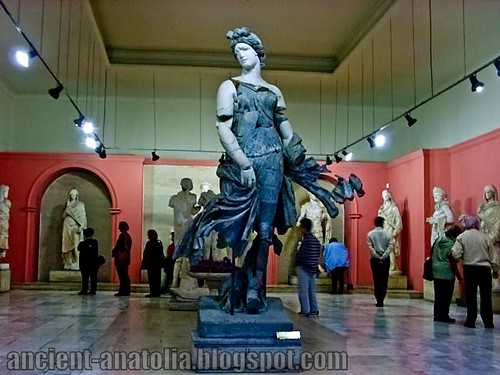
Roman Dancer at Antalya Museum, originally uploaded by voyageAnatolia.blogspot.com.
Statue of a Roman female dancer. Hall of Statues at Antalya Museum of Archaeology. Roman Period, 2nd century A.D.
Fine-grained black and white marble. The statue of a dancer was discovered in 1981 during the excavation of the Gallery of Claudius Peison at the South Bath of Perge. It is one of the most significant discoveries among all the statues. An interesting technique uses two colors of marble, black for the hair and clothing and white for the face, neck and arms. It was accomplished by using large and small pieces from different size blocks. One hundred and three broken and weathered pieces were placed together for the restoration. The weeping ends of the himation, which also serve as a belt, emphasize the twisting motion of the figure. Because of this obvious motion the figure received its name of "Dancer". She is a second century copy of an original statue that belonged to the Rococo style of the Hellenistic period. Source: "Sculptures of the Museum in Antalya" by Edip Özgür.